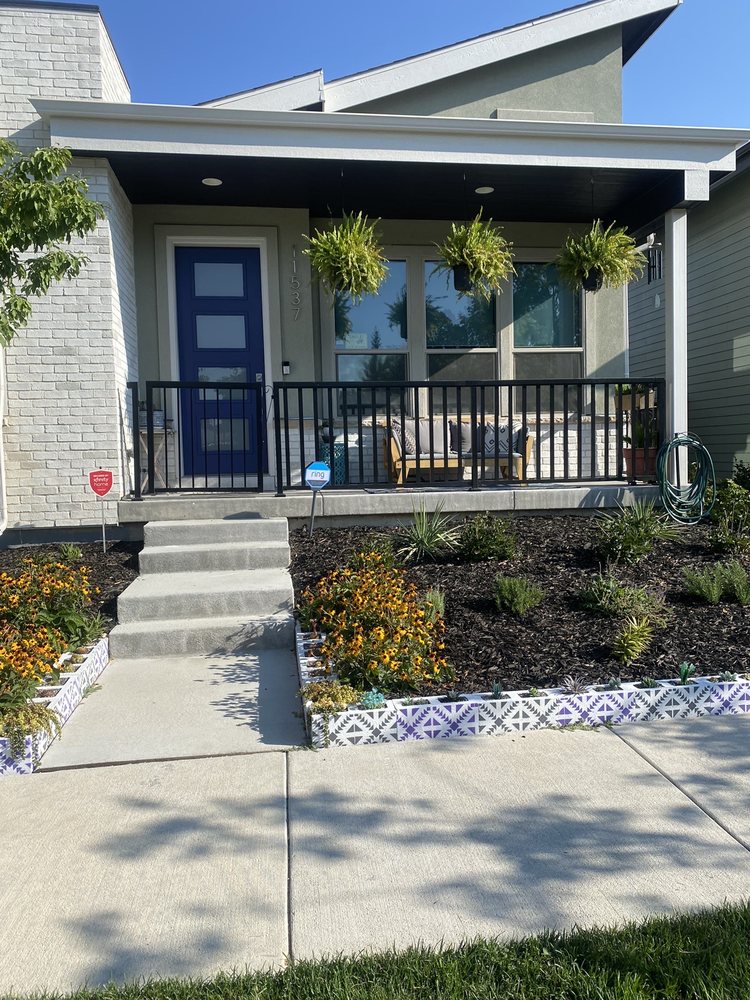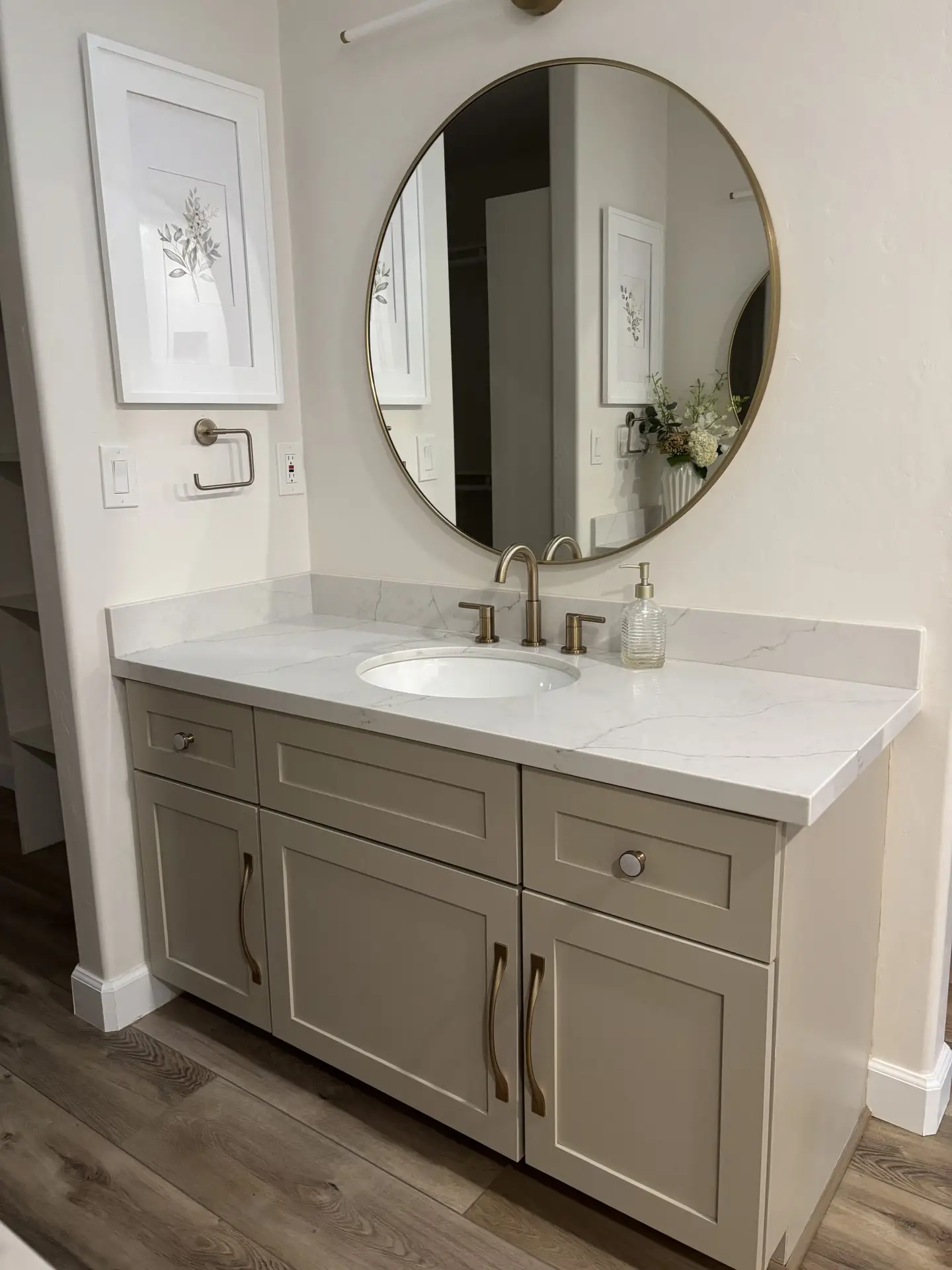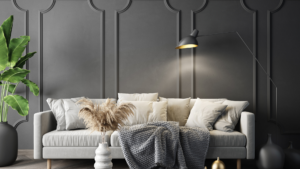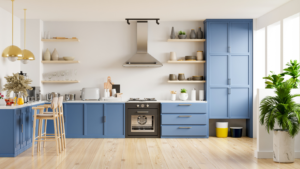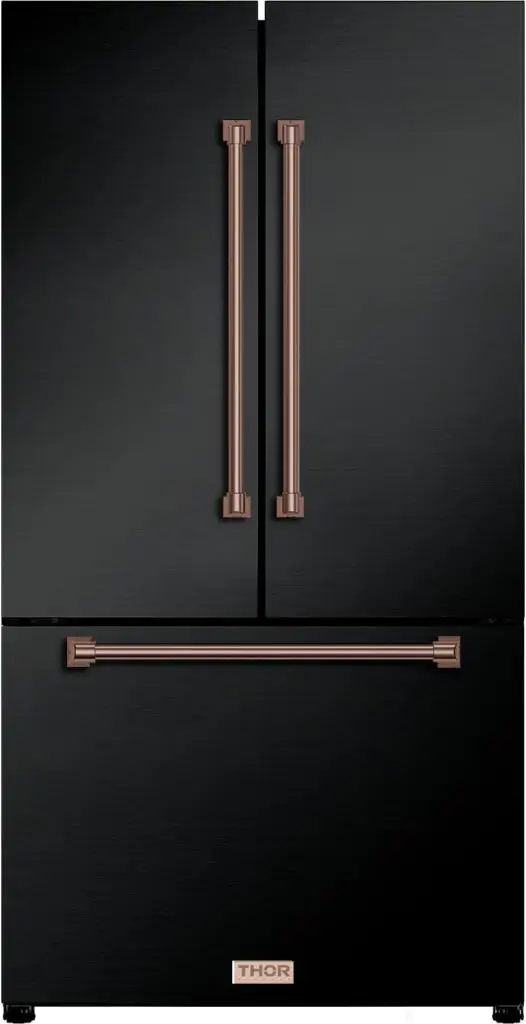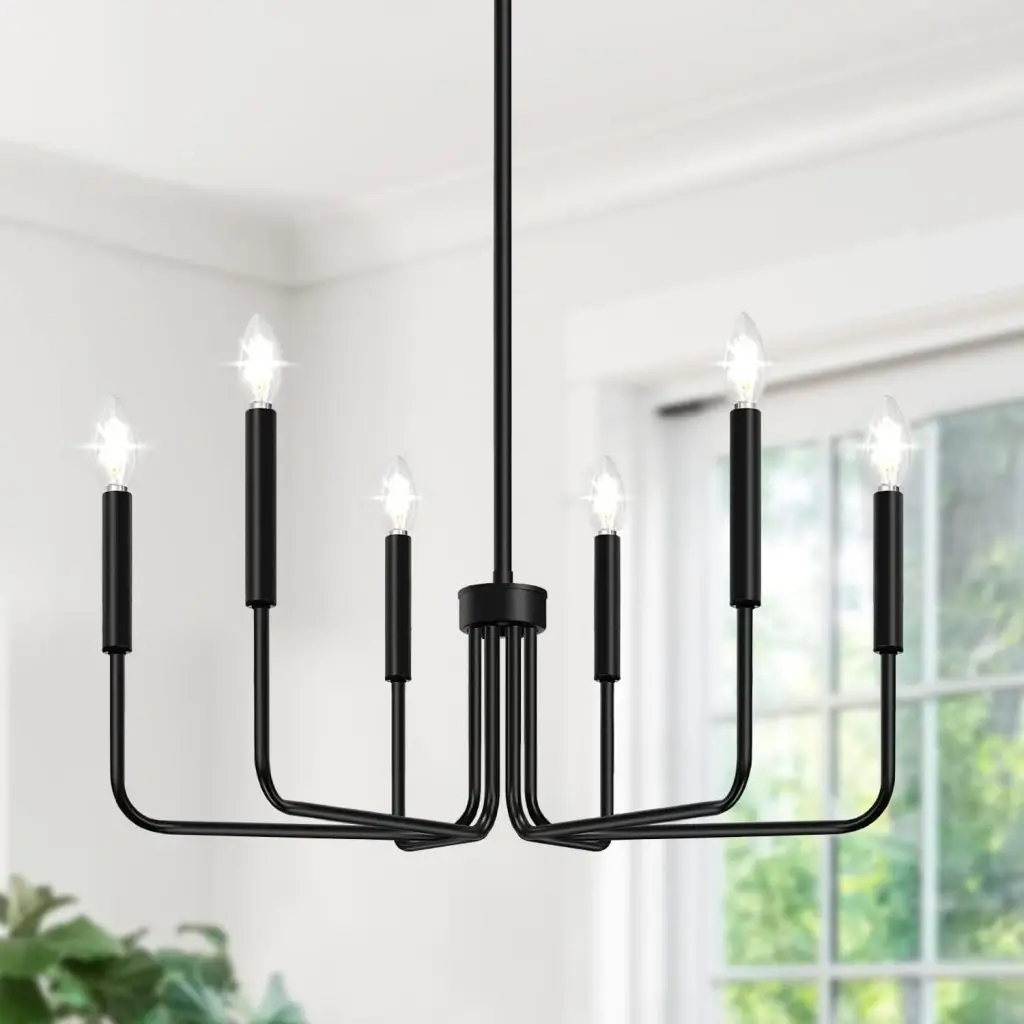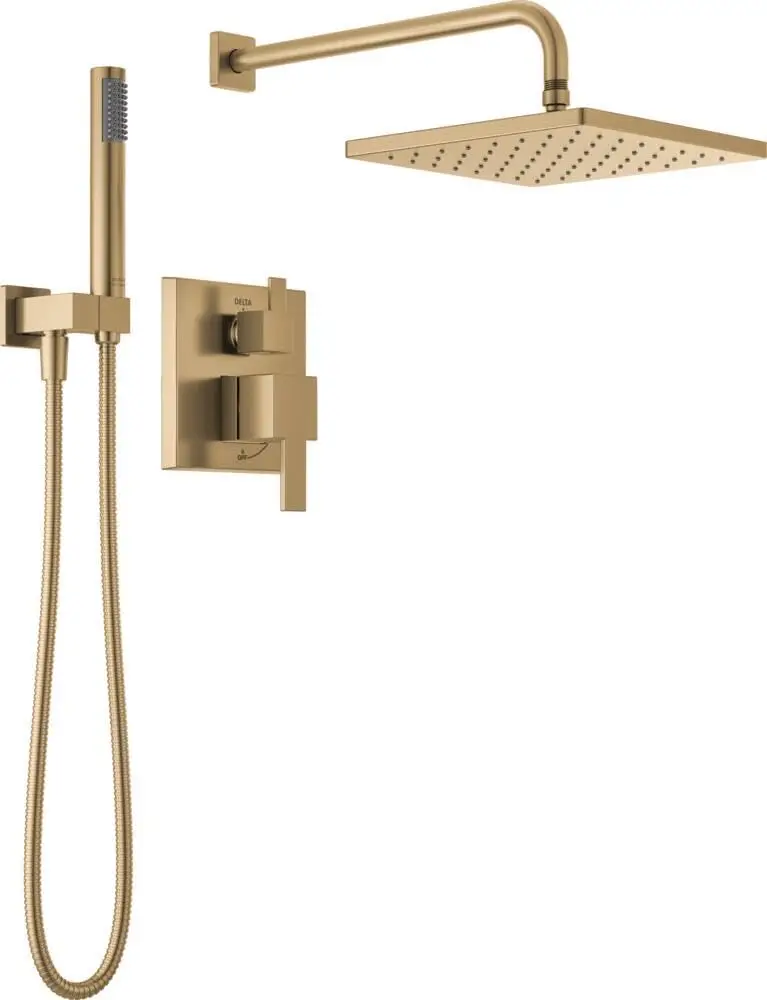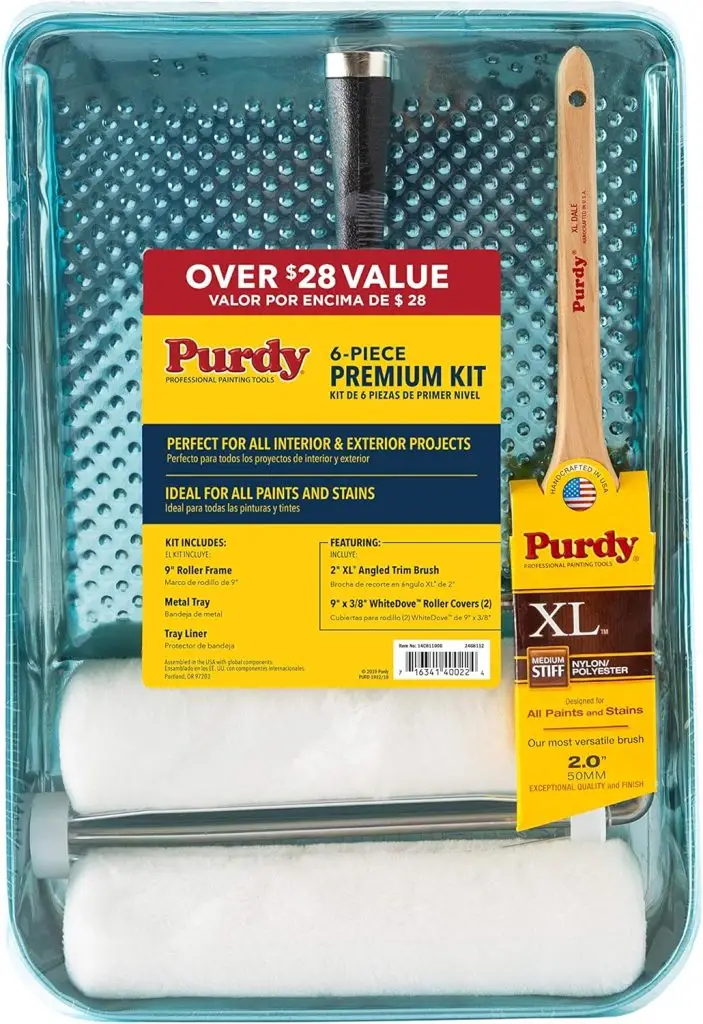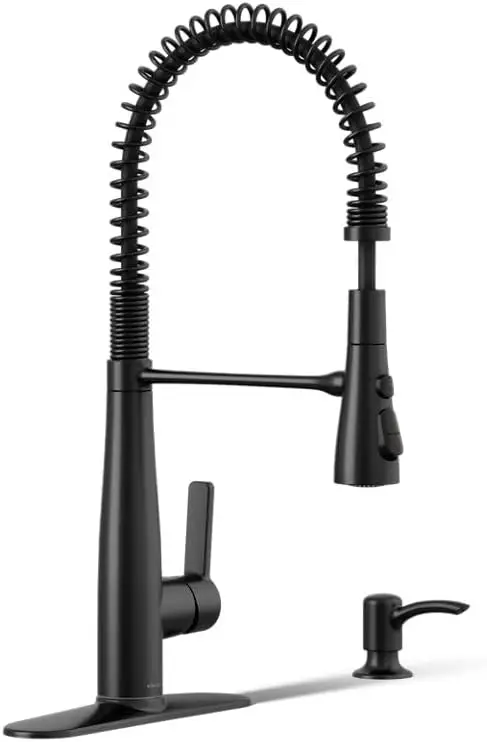Hey there, homeowners! We all know that first impressions count, and that starts right at the curb. But fear not; you don’t need a bottomless wallet to give your home’s exterior a facelift. In this post, we’ll share ten budget-friendly DIY projects that will enhance your home’s curb appeal without breaking the bank.
1. A Fresh Coat of Paint: The Power of Exterior Painting
You’ve heard it before, but it’s worth repeating: a fresh coat of paint can work wonders. When it comes to boosting your home’s curb appeal, painting your exterior is a game-changer. But where to begin?
Start by considering your home’s architectural style and the surroundings. A contemporary home might benefit from cool grays or whites, while a cozy cottage could embrace warmer tones. Think about the color scheme in your neighborhood too, as harmony can be appealing.
Choosing the right paint finish is also crucial. For most exteriors, a satin or semi-gloss finish works well; it’s durable and easy to clean. But here’s the beauty of DIY: you can experiment with small sections to find the perfect shade and finish.
And if you’re new to painting, don’t worry. You don’t need to be a pro to make your home shine. Start with proper preparation: clean surfaces, scrape off old paint, fill in cracks, and apply primer if necessary. Then, follow the “W” or “M” pattern when painting, making sure to roll or brush in the same direction as the wood grain.
2. Landscaping Magic: Greening Up Your Space
A well-manicured lawn and some carefully chosen plants can transform your home’s exterior. Landscaping isn’t just about aesthetics; it’s about creating a welcoming environment. Here are some tips for your green project:
First, consider your climate and soil type. Opt for low-maintenance plants that thrive in your region. Native plants are often a good choice; they’re adapted to your area’s specific conditions.
Think about symmetry and balance when arranging your plants. Use different heights, textures, and colors to create visual interest.
Don’t underestimate the impact of mulch. It not only helps retain moisture but also gives your garden a tidy, finished look.
Consider adding some evergreen plants to keep your garden looking vibrant year-round.
Remember, a well-kept lawn is the foundation of your landscaping project. Mow it regularly and invest in some edging to create clean lines.
3. Statement Front Door: Welcoming Entryways
Your front door is like your home’s smile; it sets the tone for the entire visit. So, why not make it memorable?
Choosing the right color for your front door can be a bit daunting, but it’s also a lot of fun. Think about the mood you want to create. A bold red door says “warm and inviting,” while a sleek black door exudes sophistication.
Before you commit to a color, try out some paint samples. Apply them to a small section of your door to see how they look in different lighting conditions.
Once you’ve chosen your color, it’s time to get creative. Consider adding some unique hardware or a stylish knocker. You’d be surprised how much of a difference these small details can make.
Now, if your door is in decent shape but needs a facelift, a fresh coat of paint is the answer. Sand it down, apply primer, and follow up with your chosen color. It’s a simple DIY project that can transform your entryway.
4. Outdoor Lighting: Shine a Light on Beauty
Lighting can do wonders for your home’s curb appeal, not to mention its safety and security. Outdoor lighting is like jewelry for your home. Here’s how to make it shine:
Start with pathway lighting. Solar-powered or low-voltage LED lights are energy-efficient options that won’t break the bank. They’re easy to install and provide a warm, inviting glow along your walkways.
Consider highlighting architectural features. Got a stunning facade or unique landscaping? Use spotlights to draw attention to these assets.
Don’t forget about your front door. A well-placed fixture can provide both style and functionality. Just make sure it complements your home’s overall aesthetic.
If you’re feeling adventurous, try some string lights. They’re not just for the holidays; they can create a cozy atmosphere year-round.
Remember, lighting should be subtle and enhance your home’s beauty, not overpower it. So, go for warm, inviting tones rather than harsh, bright lights.
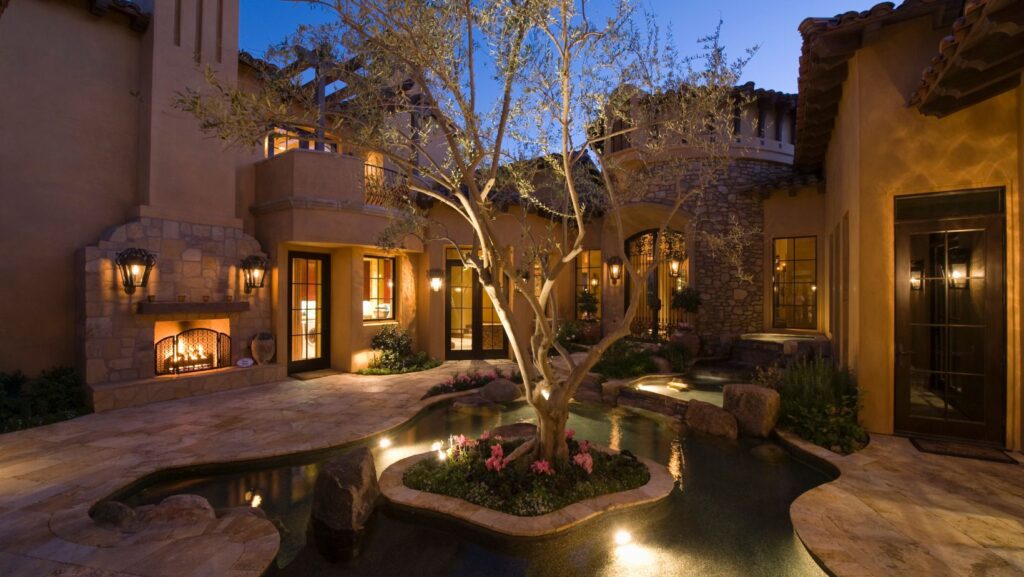
5. Clean and Tidy: De-Clutter Your Exterior
Clutter has a way of accumulating in outdoor spaces, from the front porch to the backyard. But a clutter-free environment is not only visually appealing but also functional. Here’s how to declutter your exterior:
Start with a deep clean. Sweep the porch, pressure wash the driveway, and get rid of any cobwebs or dirt on your siding.
Invest in some outdoor storage solutions. A deck box or outdoor cabinet can hide away tools, toys, and gardening equipment.
Consider vertical gardening. If you’re short on space, vertical planters and hanging pots can add greenery without taking up precious square footage.
Don’t forget about your mailbox. A fresh coat of paint or a stylish mailbox cover can add a touch of personality to your curb appeal.
Finally, take a critical look at your outdoor furniture. Is it in good condition, or is it time for an upgrade? Furniture that’s seen better days can be an eyesore.
6. Upgrade Your House Numbers: Stylish and Functional
House numbers are often overlooked when it comes to curb appeal. But they’re practical and can be a stylish addition to your home’s exterior. Here’s how to make them pop:
Consider the style of your home. Traditional homes might benefit from classic brass numbers, while modern houses can embrace sleek, minimalist designs.
Think about visibility. Your house numbers should be easily seen from the street. Make sure they contrast with your home’s background.
Placement matters. Typically, numbers are placed near the front door or on the mailbox. Ensure they’re at eye level and well-lit at night.
Installation is usually a straightforward DIY task. Just make sure your numbers are secure, especially if you live in an area with strong winds or frequent storms.
House numbers are a small detail, but they can make a big impact on your home’s overall curb appeal.
7. Repair and Replace: Fixing What’s Broken
The little things matter when it comes to curb appeal, and that includes maintenance and repairs. Here’s a checklist of common tasks to keep your home looking its best:
Check for loose or missing shingles on your roof. Damaged shingles not only look bad but can lead to leaks and more significant issues.
Inspect your gutters and downspouts. Clean them regularly to prevent clogs and potential water damage.
Look for peeling paint or rot on your trim and siding. A fresh coat of paint or some minor repairs can do wonders.
Check your driveway and walkways for cracks. Repairing them not only improves aesthetics but also prevents tripping hazards.
Ensure your windows are in good condition. Replace any cracked or broken panes, and make sure they’re well-sealed to improve energy efficiency.
Examine your outdoor fixtures and hardware. Loose or rusty items can detract from your home’s overall appearance.
8. Furniture and Decor: Outdoor Living Spaces
Creating cozy outdoor living spaces can add charm and functionality to your home’s exterior. Here are some budget-friendly ideas:
Start with comfortable seating. Consider investing in some outdoor cushions and pillows to make your space inviting.
Repurpose old furniture. With a bit of sanding and a fresh coat of paint, you can breathe new life into tired outdoor furniture.
Add some greenery. Potted plants and hanging baskets can add color and a touch of nature to your outdoor oasis.
Outdoor rugs can define a space and make it feel more like an outdoor room.
Consider some DIY projects like building a fire pit or a simple outdoor bar. These can be fun projects that enhance your outdoor space.
Remember, outdoor spaces are an extension of your home, so treat them with the same love and attention to detail.
9. Window Treatments: Framing Your View
Windows play a significant role in your home’s curb appeal. They’re like the eyes of your house, and you want them to shine. Here’s how to make the most of your windows:
Consider the architectural style of your home when choosing window treatments. Traditional homes might benefit from classic shutters, while modern houses can embrace sleek blinds or shades.
Think about the functionality you need. Do you want more privacy, or do you want to let in more light? There are window treatments to suit all needs.
Don’t forget about maintenance. Keep your windows clean and in good repair. Cracked or damaged windows can be a major detractor from curb appeal.
Window treatments are a relatively small investment but can have a big impact on your home’s overall look.
10. Personal Touch: Adding Character
Last but certainly not least, don’t forget to add a personal touch to your home’s curb appeal. Your home should reflect your personality and style. Here are some ideas:
Consider a unique mailbox that reflects your interests or hobbies.
Personalized welcome mats or signs can add a warm, inviting touch.
Create a focal point with a beautiful garden or a unique piece of outdoor art.
Consider adding a bench or swing to create a cozy spot for relaxation.
Remember, it’s the personal touches that truly make your home feel like yours.
There you have it– ten affordable DIY projects that can transform your home’s curb appeal. Remember, it’s not about how much you spend, but the love and care you put into your home. So, roll up your sleeves and get ready to make your home the envy of the neighborhood! Your wallet will thank you, and your home will smile back at you every time you pull into the driveway. Happy DIY-ing!

